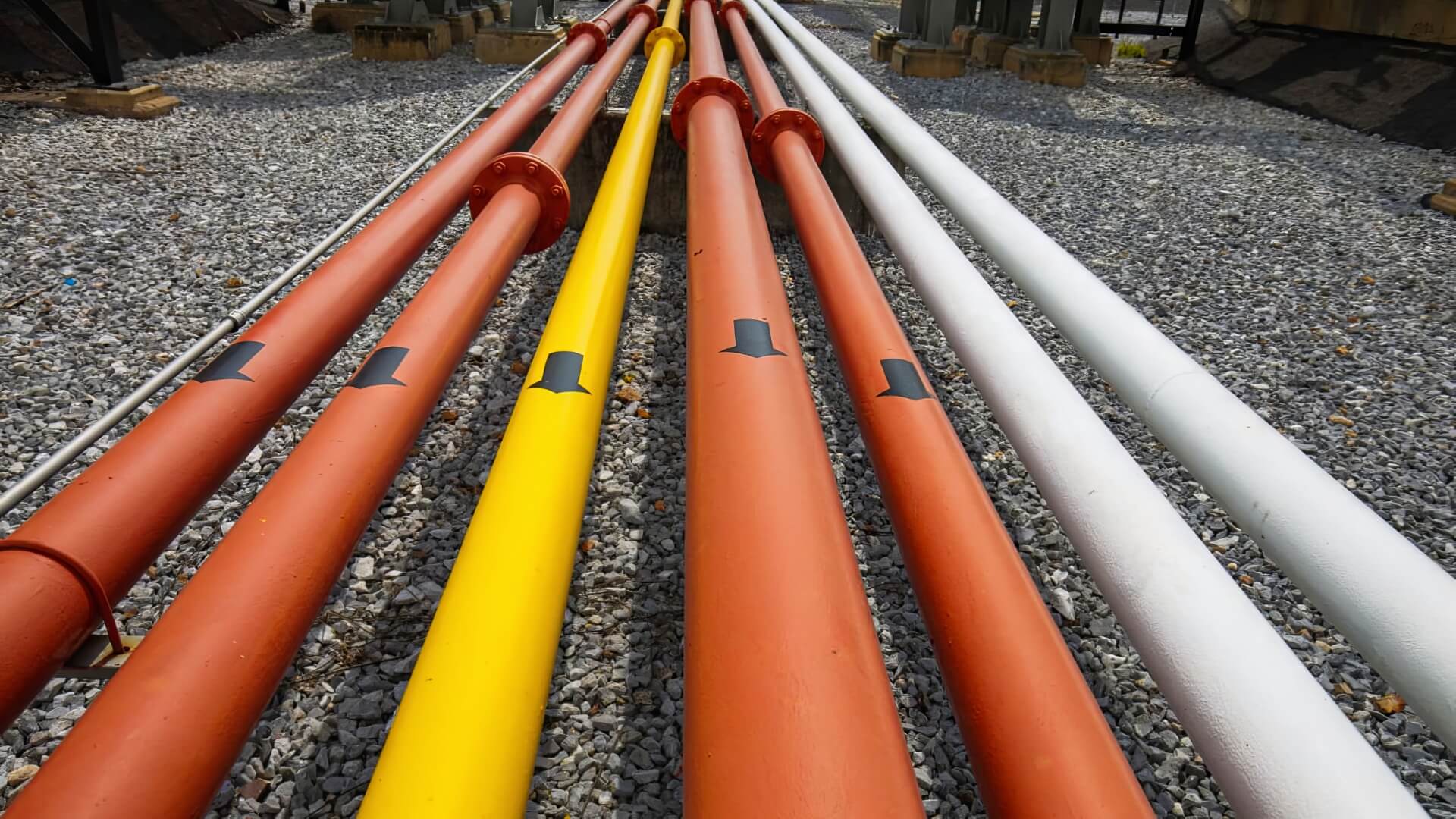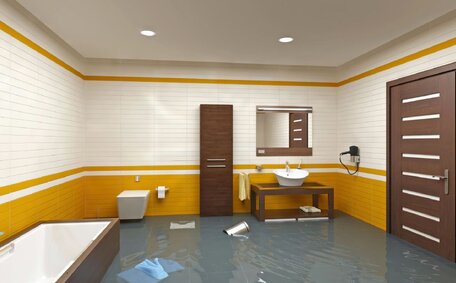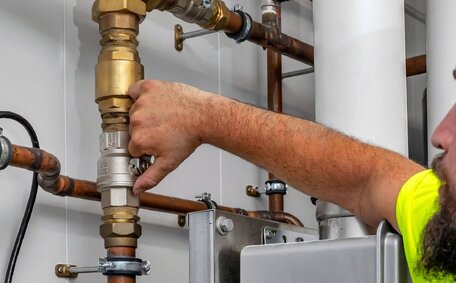Introduction to Pipe Relining
Pipe relining is an innovative technique about pipe restoration that repairs damaged or ageing pipes non-intrusively, without the need for full pipe replacement. This trenchless technique involves inserting a resin-saturated fabric tube into the existing pipe and curing it to form a smooth, seamless interior finish.
Compared to traditional pipe replacement methods, relining offers numerous benefits. It is much faster and more cost-effective, causes minimal disruption as no digging is required, and helps preserve the structural integrity of surrounding infrastructure. Pipe capacity and flow rate are also well maintained after relining.
With over 10 years of experience you can trust Moorebank Plumbing to know about advanced plumbing services, including pipe relining solutions for both residential and commercial customers in Sydney.
From pipe inspections, cleaning and preparation to seamless relining and post-installation verification, you can trust our team to return your piping to better-than-new condition.
Understanding Minimum Pipe Diameters
When considering pipe relining, an important factor is ensuring the existing pipe meets minimum diameter requirements. Per Australian plumbing regulations, the minimum pipe diameter for relining residential properties is typically 100mm for sewer lines. This allows easy insertion and proper curing of the resin-saturated relining tube.
For commercial sites, minimum diameters are often higher due to greater capacity demands. AS/NZS 3500 specifies minimum diameters of 150mm for sink and basin wastes, and 100mm for branch lines up to 10 metre lengths. Stormwater systems have minimums of 90 – 150mm depending on factors like roof area, slope, and flow intensities.
Smaller diameters may work but can present challenges in getting smooth, rounded finishes post-installation. They also allow less tolerance for any internal build-up over time, risking capacity issues. Our experienced Moorebank Plumbing team considers all specifications and site factors when assessing relining viability and always remains compliant with statutory codes.
While diameters play a key role, even pipes under minimums can potentially be relined using specialised products and techniques. Provided pipe access and structural stability are adequate, we determine relining eligibility on a case-by-case basis, aiming to save customers cost while maximising functionality.
Typical Pipe Sizes Used in Plumbing
In residential plumbing systems, some of the most common pipe diameters are:
- 15mm – Used for fixtures like sinks, basins and laundry tubs
- 20mm – Common for taps, valves and branch water lines
- 25mm – Found in kitchen taps, toilets and some branch lines
- 32mm – Used in baths/showers and some main water lines
- 40-50mm – Typical for main sewer lines under dwellings
In commercial settings, pipe diameters tend to be larger, such as:
- 50mm – Common in hand basins/taps and some branch drains
- 65-80mm – Used in sinks and branch waste lines
- 100mm – Found in main sewer lines under buildings
The diameter size affects potential water flow rates and system efficiency. For optimal pipe function, velocities of 1-3 m/s are typical. If diameters are too small for a fixtures’ peak demands, problems like excessive noise or pipe erosion can occur over time.
Our team at Moorebank Plumbing has extensive experience working across the range of pipe sizes used in residential and commercial plumbing. When it comes to repairing or replacing pipes, we ensure pipe diameters are suitable for their application and expected usage demands.
Industry Standards for Minimum Relining Diameters
Industry standards provide specifications for the minimum pipe diameters that can be viably relined. Per the Australian Standard AS/NZS 3500 and the PCA Pipe Renovation Code, the generally accepted minimum is DN100 or 100mm diameter for residential sewer lines.
For non-residential sites like commercial buildings, standards specify slightly higher minimums of DN150 or 150mm. This accounts for the higher waste volumes typically seen in these settings.
The standards reflect extensive testing on the limitations of existing relining materials and techniques. Factors considered include being able to thoroughly clean pipe interiors, insert lining tubes smoothly, and ensure proper curing and adhesion.
While possible in certain conditions, lining pipes under 100mm/DN100 often requires specialised products and methods, with more variability in long-term outcomes. Hence the standards cite DN100 or 100mm as the broadly preferred minimum diameter for conventional structural relining.
With continual advancement in this evolving field though, the range of lineable pipe sizes is always expanding. Using CIPP products from proven manufacturers, our team at Moorebank Plumbing can currently handle diameters ranging from DN40/40mm right up to DN225/225mm.
Measuring Existing Pipe Dimensions
To determine if an existing pipe is suitable for relining, precise internal diameter measurements are crucial before proceeding. This allows selection of an appropriate resin-saturated tube and confirmation that minimum size requirements can be met post-installation.
Expert technicians first use cctv pipe inspection to get a visual of the entire pipeline and assess if diameters appear adequate. We then take detailed measurements at multiple access points along the line using manual gauges or laser profiling devices. Readings are taken top, middle and bottom across each pipe’s cross-section.
Measurements are usually rounded down to the nearest 5mm increment to allow tolerance. We average all readings across access points to determine a pipe’s true working diameter for relining purposes. Precision at this stage is vital for long-term functionality and adhesion of the finished relined pipe.
With extensive training in pipe measurement and profiling, Moorebank Plumbing’s technicians have the knowledge to thoroughly assess diameter suitability on any residential or commercial relining project in the Sydney region.
Overview of Relining Methods and Requirements
There are two main methods used for pipe relining – Inversion and Pull-in-Place.
The inversion method involves inverting a resin-saturated felt tube inside the host pipe and using hot water or steam to cure the resin. The pull-in-place method inserts a coated fabric tube into the host pipe and inflates a bladder inside it to press the fabric against pipe walls while curing with hot water/steam.
Specific requirements depend on the relining technique, pipe material and site conditions, but common considerations include:
- Pipe must be structurally sound and fully scoped for defects, obstacles and diameter suitability
- Adequate access points at entry and exit locations to insert equipment
- Sufficient flow capacity and pressure for inversion/curing fluids
- Uninterrupted curing times up to several hours based on pipe length
Typical equipment used includes cctv cameras, hydraulic winches, tube inversion cradles, steam generators and centrifugal pumps. Advanced computer systems monitor and control resin saturation, tube insertion and curing status.
Our expert Moorebank Plumbing team has experience relining a wide range of pipe infrastructure – PVC, concrete, vitrified clay, copper, cast iron, galvanised steel, asbestos cement and more. We work on pipes from small residential lines up to large aqueducts and sewer mains across Sydney.
Inspection, Cleaning and Preparation
Before any relining project, extensive pipe inspection and cleaning is crucial. High-pressure water jetting removes built-up deposits, roots, encrustations and old pipe linings to provide a smooth surface for adhesion.
Our technicians first perform CCTV inspections to identify defects, blockages, diameter suitability and the level of cleaning required. Footage aids planning access points and equipment logistics.
We may also do smoke testing to detect leaks plus ground-penetrating radar to map pipe routes. Any sections needing repair or replacement are addressed first.
Thorough cleaning is vital so relining tubes insert smoothly without snagging, and resin contact is maximised for strong bonding. We adjust water pressures and nozzle types to the pipe material and soiling levels until original surfaces are exposed.
Moorebank Plumbing follows best practise cleaning standards before relining. With pipes restored to original condition, our expert installation then allows optimal flow, longevity and structural enhancement.
Installing the New Pipe Lining
During installation, our team thoroughly saturates the fabric tube liner with a thermosetting resin before inserting it into the host pipe. Careful measurements ensure the reliner diameter allows for a reduction of around 5-10mm once set fully.
Using hot water or steam, we evenly cure the resin-saturated liner from entry to exit point until rigid. As it hardens, the felt tube presses firmly to the pipe interior, moulding to any bends or irregularities to form a smooth, jointless surface.
Made from durable epoxy or polyester resins, the seamless relined pipe effectively becomes a “pipe within a pipe”. It protects against further corrosion or cracks, restores flow capacity, and adds decades of extra service life.
With precision equipment and strict adhesion to industry standards, Moorebank Plumbing expertly installs structurally sound, environmentally stable relining that upgrades your pipe infrastructure to better-than-new condition.
Testing and Verifying the Lined Pipe
Once our team has completed the pipe relining installation process, we thoroughly test and verify the integrity of the new lining before returning pipelines to service. Post-installation verification is a crucial quality assurance step we undertake on all projects.
We visually inspect the entire length of lined pipe by CCTV camera, checking for consistency of finishes, signs of deficiencies like air pockets or pinholes, and confirming a smooth, unobstructed pathway. If needed, a final sweep with high-velocity jetting removes any lingering debris.
For pressure pipes, additional hydraulic testing takes place by plugging ends and gradually increasing water pressure beyond maximum operating conditions. The lined pipe must maintain integrity without leaks, bulges or other defects for a sustained duration to pass. Gravity pipes may be tested using air or smoke methods instead.
All testing results, plus before and after pipe comparisons, are fully documented for our customers’ records. Only when completely satisfied do we restore fluid service and functionality. Moorebank Plumbing stands behind our expert relining workmanship with long-term warranties for true peace of mind.
Benefits of Choosing Pipe Relining
Pipe relining provides numerous impressive benefits that make it a top choice over traditional pipe replacement methods for customers in Moorebank and surrounding suburbs.
As a trenchless technology, relining eliminates the need for major digging or destruction to floors, driveways and landscaped areas. The non-invasive process allows pipes to be restored in-place conveniently and cost effectively.
Structurally, the robust epoxy or polyester relining materials are extremely durable, providing upgraded flow capacity and corrosion resistance that enhances lifespan by 50 years or more. Maintenance needs are also minimised thanks to the smooth finished inner wall.
For residents and businesses alike, pipe relining checks all the boxes keeping disruption, time and expenses to a minimum while maximising the functionality and longevity of pipes. Our Moorebank Plumbing team specialises in making this innovative solution a stress-free and rewarding reality.
Economic Savings Compared to Replacement
When evaluating options to repair damaged or degraded pipes, pipe relining offers major economic advantages over traditional pipe replacement. By restoring pipes in-place rather than digging them up, huge cost savings result.
Full pipe replacement requires extensive excavation, new pipe materials, structural modifications, landscaping repairs and major plumbing work – impacting time, labour, materials, disposal fees and other expenses. Pipe relining circumvents these costly elements.
As a minimally invasive technique done through small access points, no digging is needed and disruption is kept to a bare minimum. The existing pipe remains structurally intact while only the interior surface is upgraded. With less equipment, materials and manpower required, projects are completed faster and more affordably.
While exact savings depend on site specifics, overall costs of pipe relining are typically 50-60% less than full replacement. For 150 metres of sewer line pipe, averages show relining around $250 per metre, while replacement would exceed $500 per metre. With longevity matching replacement methods, the economical value is highly appealing.
Minimal Environmental Impact
Pipe relining is an extremely environmentally friendly repair solution compared to full pipe replacement. By restoring pipes in-place, it prevents the need to excavate and dispose of old pipe materials, saving thousands of tonnes of waste annually.
With no digging required, existing infrastructure and landscapes remain fully preserved as well. Trees, gardens, driveways and flooring can stay untouched. The small access points used also reduce disruption to properties and public areas during installations.
Moorebank Plumbing utilises strict procedures for any liquids, materials and emissions during our relining process to protect soils, groundwater and the community. We safely collect all resins and curing by-products for appropriate disposal.
Pipe relining’s ability to extend pipe lifespan dramatically also means fewer raw materials required over time compared to replacement every 50 years or so. With both immediate and long-term impacts kept minimal, it is an optimal choice for environmentally conscious property owners.
Longevity and Warranties for Peace of Mind
One of the most reassuring aspects of pipe relining is the extensive warranties offered. Quality manufacturers and installers like Moorebank Plumbing provide warranty coverage of 50 years or more on relining projects.
These warranties certify the long-term durability and performance of the epoxy or polyester materials used to reline pipes. They also attest to the quality craftsmanship of installation and the confidence in fixing any potential defects that may arise.
For residential and commercial customers alike, the peace of mind from such lengthy warranties gives assurance that pipes have been restored to better-than-new condition. Should any issues occur down the track, which is rare, expert repair or replacement would be provided promptly under warranty.
To learn more about warranties and long-term guarantees when getting pipes relined in Moorebank or surrounding regions, call the friendly team at Moorebank Plumbing on 1300 349 338. Or email us at [email protected].






